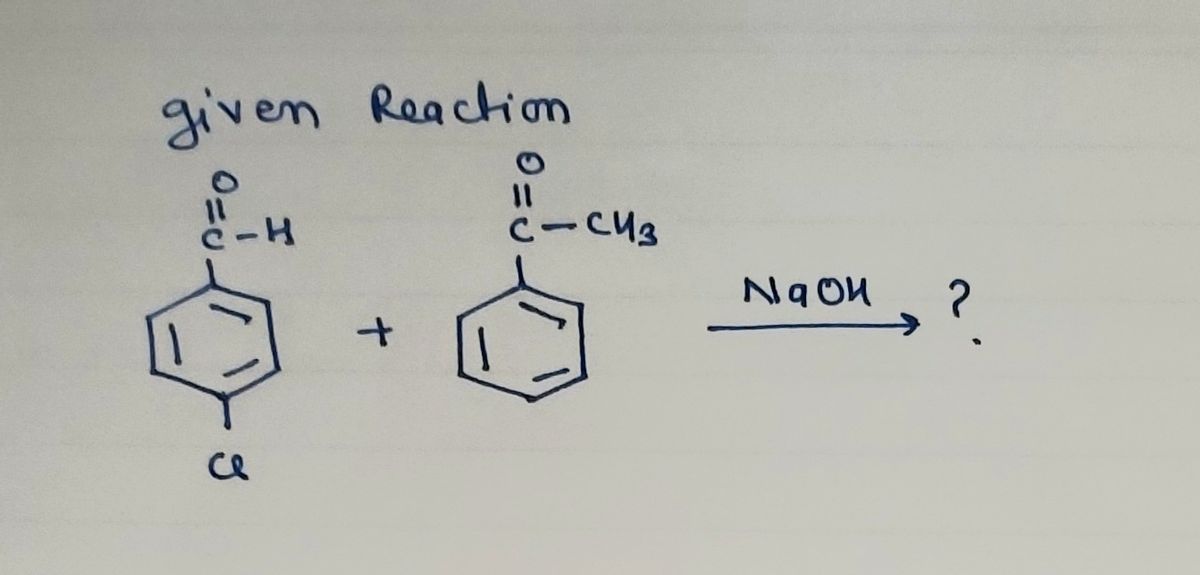The image shows a handwritten chemical reaction. Here's the transcription: There is a reaction labeled as "d)". It depicts two molecules under an arrow indicating a reaction condition. - The first molecule is benzaldehyde, with a benzene ring attached to a formyl group (C=O with an H attached). - The second molecule appears to be acetophenone, consisting of an acetyl group (C=O with a CH3 attached) linked to a benzene ring. These two are separated by a plus sign "+", suggesting they are reactants in a reaction. An arrow points to the right from the reactants, indicating the direction of the reaction. Above the arrow is the reagent notation "NaBH₄" suggesting sodium borohydride is used in the reaction. This setup likely represents a reduction reaction where sodium borohydride is used to reduce the carbonyl groups in the compounds.
Classes Of Functional Groups
Organic Chemistry deals mostly with carbon and hydrogens, also called hydrocarbons, but those groups which replace hydrogen and bonds with carbon to give a characteristic nature, unique of their own, to the hydrocarbon they are attached to, are called functional groups. All the compounds belonging to a functional group undergo reactions in a similar pattern and are known to have similar physical and chemical properties.
Characteristics Of Functional Groups
In organic chemistry, we encounter a number of special substituent groups which are attached to the hydrocarbon backbone. These groups impart certain characteristics to the molecule of which it is a part of and thus, become the highlight of that particular molecule.
IUPAC Nomenclature
In Chemistry, IUPAC stands for International Union of Pure and Applied Chemistry which suggested a systematic naming approach for the organic and inorganic compounds, as in the beginning stage of nomenclature one single chemical compound was named in many ways by which lead to confusion. The need for this approach aroused as the number of chemical compounds newly discovered were increasing (approximately 32 million compounds) and the basic concept of nomenclature i.e. the trivial nomenclature and the derived system of nomenclature failed to overcome the challenge. It is an important task to name a chemical compound systematically and unambiguously which reduces lots of confusion about the newly reported compounds.
Predict product


Step by step
Solved in 2 steps with 2 images









